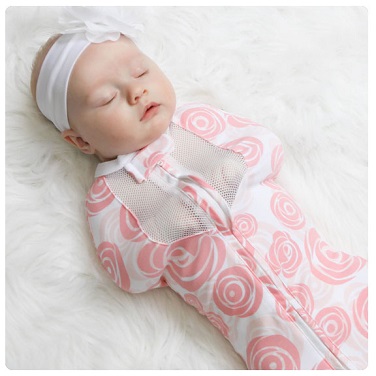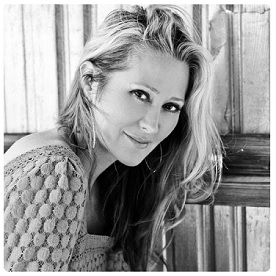 Most parents are taught about the comfort and benefits that are achieved from swaddling, which has been practiced for hundreds of years. What we don’t know from the get-go is what a pain it can be. Wrapping baby. Re-wrapping baby. Wrapping baby. Rewrapping baby… and so on.
Most parents are taught about the comfort and benefits that are achieved from swaddling, which has been practiced for hundreds of years. What we don’t know from the get-go is what a pain it can be. Wrapping baby. Re-wrapping baby. Wrapping baby. Rewrapping baby… and so on.
This week, he held a highly informative and important teleclass, presented by Karen Barski, Certified Infant Care Specialist and Instructor, and President and Creative Designer at Woombie, also our generous sponsor, during which Karen expertly covered the basics of swaddling as baby transitions from birth to 6 months.
During class, Karen discussed topics such as the importance of swaddling, how to swaddle effectively and safely, safe sleep practices, sleep routines, how sleep effects the entire family, and more.
In case you missed it, you can listen to the recorded teleclass HERE.
Since September is Baby Safety Month, here are 5 Baby Sleep Safety Tips from Karen, as originally posted on the Woomie blog:
September is Baby Safety Month so it is a good time for parents to focus on making sure they are doing all they can to keep their babies safe and protected. Knowing that baby is safe and sound will give parents peace of mind, so creating a safe sleep environment for baby should be a number one priority. Here are five important tips on baby sleep safety.
1. Keep crib empty
It’s important to keep cribs empty of all items such as pillow, blankets, bumper pads and stuffed animals. All of these items pose suffocation hazards to babies. Any loose fabric or soft cushions can unravel and block baby’s nose and mouth. Fighting for air or becoming overheated from too many blankets may be linked to SIDS.
2. Safe swaddling
Swaddling can be very beneficial for baby as it mimics touch and recreates the confinement felt in the womb. It also helps maintain the “back is best” sleep position and promotes good sleeping patterns. However, traditional swaddling blankets pose the risk of wrapping babies too tightly and reducing necessary movement in the hips causing hip dysplasia. Thick blankets or too many layers can cause overheating, and strong babies can break out of traditional swaddling blankets which can unravel and cover baby’s face.
There are many swaddles available nowadays that do not require wrapping. Choose a safer option like the Woombie, a baby swaddle that requires no wrapping and is designed to gently hug baby while allowing for natural movement. The Woombie Air is a breathable swaddle that allows for excess body heat to escape making it the first ventilated swaddle.
3. Put baby on his back
Make sure that you always place baby on his back when you are putting your little one down for the night or for a daytime nap. This is the best sleep position for babies because babies who are placed to sleep on their stomachs are at a higher risk for SIDS. The reason for this is uncertain but there have been findings that suggest that infants who sleep on their stomachs get less oxygen or rebreathe their own carbon dioxide, or “bad air”. It is important to keep putting baby down on his back throughout the first year of life.
First Candle, a national nonprofit health organization uniting parents, caregivers and researchers nationwide with government, business and community service groups to advance infant health and survival, says, “As human beings, when we exhale we exhale carbon dioxide or “bad air.” This is normal – we all do it! But when a baby sleeps on its tummy, or there is soft, fluffy or loose bedding or other objects in their sleep space, that carbon dioxide can build up around the baby’s head and face. So, rather than breathing fresh air, the baby breathes the bad air. To a normal, healthy baby breathing the bad air would not cause a problem. Their brain would tell them that they are breathing too much carbon dioxide and they would cough, cry, turn their head or do something to get themselves out of the challenging situation. To a baby predisposed to SIDS (see Triple Risk Model), their brain does not tell them there is a problem, so they continue to breath the bad air, which can then cause them to die suddenly and unexpectedly. The same holds true for overheating, another risk factor – when a healthy baby becomes overheated their brain recognizes the problem and attempts to correct it. When a baby predisposed to SIDS overheats, nothing happens to correct the situation.”
4. Monitor your baby
Having a baby monitor in the room with your baby allows parents to keep an eye or ear on their baby from another room. Monitors give you the ability to listen to your baby and check on them with disturbing their sleep. They help you to identify whether or not baby needs your attentions and can provide parents with reassurance that baby is sleeping safe and sound.
5. Safe co-sleeping
There is a debate over whether co-sleeping is beneficial to babies and there are pros and cons for each side. The argument for co-sleeping is that children who sleep next to their parents tend to have better emotional health later on in life. They tend to be happier, less anxious, and have higher self-esteem. Some parents believe that leaving baby alone to cry himself to sleep results in stress which can make baby more prone to illness. Parents who believe in co-sleeping find that baby falls asleep faster and sleeps better overall.
On the other side of the debate, parents argue that co-sleeping is risky for babies as there is an increased chance of overheating and a risk of suffocation if a parent accidentally rolls onto the baby. They believe that an infant sleeps better on his own as constant bed movement can disturb a baby who is co-sleeping. They also argue that co-sleeping does not leave parents with sufficient time to themselves to wind down for the night and does not allow for intimate alone time for parents.
For parents who do decide to take the co-sleeping route, make sure your mattress is firm with tightly fitted sheets and keep your pillow away from the baby. Keep the bed away from side tables and make sure there are no gaps baby can fall into. The best position for baby is on the side of mom instead of in the center of the bed. Consider buying a larger size bed so everyone has more space and can get a better night’s sleep.
* * * * *
Here are some additional articles that Karen would like to share with you for your ongoing reference and support:
Generously sponsored by
 Karen Barski, President, Creative Designer of Woombie, and Certified Infant Care Specialist & Instructor, is a graduate of St. Vincent’s College of nursing and earned her BSN from Sacred Heart University in 1994. With a 22 year nursing background and 5 kids of her own, Karen identifies the needs of parents and babies, which always brings her to the drawing board to design new innovative products, many of which are eco’friendly. Inventor of the Woombie baby swaddle and fashion forward Mod’Swad brand, Karen’s drive, ambition, and creativity has shaped her business to what it is today. You can reach Karen at Karen@woombie.com.
Karen Barski, President, Creative Designer of Woombie, and Certified Infant Care Specialist & Instructor, is a graduate of St. Vincent’s College of nursing and earned her BSN from Sacred Heart University in 1994. With a 22 year nursing background and 5 kids of her own, Karen identifies the needs of parents and babies, which always brings her to the drawing board to design new innovative products, many of which are eco’friendly. Inventor of the Woombie baby swaddle and fashion forward Mod’Swad brand, Karen’s drive, ambition, and creativity has shaped her business to what it is today. You can reach Karen at Karen@woombie.com.




